Michael Curry: Susan, first of all let me say that my interest in your work is twofold. First, I go through a lot of portfolios and your compositions make refreshing viewing. Like diptichs and sequence imagery, your works carry complex narratives. Secondly, you share some of my political standpoints and there’s an importance in documenting massive demonstrations. I was in London when more than a million people took to the streets in 2003 and the only thing more incredible than seeing such a diverse group of people together with a single purpose was to see these same people essentially ignored.
What are some of your own experiences while documenting protests and how do you approach them from a photographic perspective?
SB: I like shooting crowds and I like shooting people in movement, so for me events like marches provide quite an exciting venue. I do consider myself there as a fellow protester, however, as well as a quasi-documentarian.
Any photography is always foremost about light, so if the light isn’t right, I won’t be shooting. Next in line I’m looking for gesture, expressions, exchanges between people, and that sense of motion. I’m looking to convey the “crush of humanity” and the energy and vitality of the event. And of course some documentation of the many heart-felt and enormously clever signs.
Your technique of compositing images – how much of the compositing do you do while catching the images and how much is puzzled together in the darkroom?
Rarely do I combine the images later (it is almost all composed in-camera). I do, however, sometimes have to remove chunks just to keep the pieces a manageable length. So I am usually taking away, not adding to the imagery, if changing at all.
You make use of a $20 plastic Holga. Can you tell us a little about how you came to be using the Holga and the reasoning behind its use?
I hadn’t done photography in years, and I ran across this one month class on the Holga, of which I had never heard. I took the class because it was a non-threatening way to ease myself back into photography/art. The overlapping technique was just one of the assignments, but I took to it instantly.
The Holga is one of the few cameras that allows you to easily do this technique. It is also an extremely light camera, which is necessary for me health-wise (I have repetitive strain problems with my arms from being a computer programmer).
Viewing your images online is a little difficult given their width – how large are the prints you produce from your Holga composites? And how do you print them from a single strip of film?
I currently have two standard sizes: 30” wide x 7” high and 15” high by 5 to 8 feet long. I am hoping to make them much bigger.
I started off making them in the darkroom, which required using an 8×10 enlarger. But even then I had to make the images too short. And the dodging and burning needed for these things was a nightmare (especially printing in color which is done in complete darkness). So I now scan and then work digitally.
I have an 11”x17” flatbed scanner (Epson 1640xl) and can scan a half a roll in one swipe. I then do all my tonal correction and whatever minimal editing I’m going to do in Photoshop. I send the files out to be printed as digital C-prints. So they end up on the same photographic paper as had I done them in a darkroom.
When did you start your photographic work? And why photography?
I was a fine-art major in college, with photography as my main focus; this was back in the 70’s. I kept it up for a handful of years but then let it slide. I just took it up again 3 years ago.
I’ve done various kinds of art over the years, but there was a definite sense of coming home with photography. And it is the one medium that I can look back at my first pieces and still like them.
What are your feelings about digital versus traditional photographic methods?
What I’m doing, in the way I am doing it, can only be done with film. Combining single images in Photoshop may give the same kind of look but isn’t at all the same kind of experience. I like to shoot very spontaneously and fast and I enjoy the chance element. To me the chance element is an integral part of the work I’m doing.
I have a fondness for the darkroom experience, but you can’t beat the appeal, in working digitally, of being able to perfect an image and then preserving it as such. Having to go through the whole process for each and every print done in the darkroom is a pain. Plus the control you have in Photoshop makes the dodging/burning techniques of the darkroom seem downright primitive.
Do you practice any other artistic disciplines? (painting, sketches, video, etc.)
For awhile I did painting, I’ve done a few sculptures in stone, some drawing. I’m just doing photography at present.
Who are the photographers that inspire you the most?
Certainly in college I was influenced by Jerry Uelsmann and also Edward Weston. Robert Frank, Lee Friedlander, Gary Winogrand, William Eggleston, Bruce Gilden, and Sally Mann are some others.
And who are the non-photographic artists that you most admire? (filmmakers, writers, dancers, painters, etc.)
I actually usually prefer looking at painting over photography. I like abstract work, in the vein of abstract expressionism. I guess I’d say Motherwell is my favorite.
What are your goals in regard to your photographic work?
I’m currently a finalist for a public art project for an airport in Indianapolis. Doing projects such as those are my primary goal. I also hope to get gallery representation at a reasonably good gallery in New York. And any opportunities that will allow my pieces to be created large, like in corporate lobbies, transit centers, etc.
Any final comments, demands, quotations, advice or anecdotes?
Just that some people get so bogged done in the technical aspects of photography (even some Holga shooters!). I tell people to just shoot and have fun and not worry about how it the pictures are going to turn out. You might be pleasantly surprised.
Thank you so much for your time, Susan.
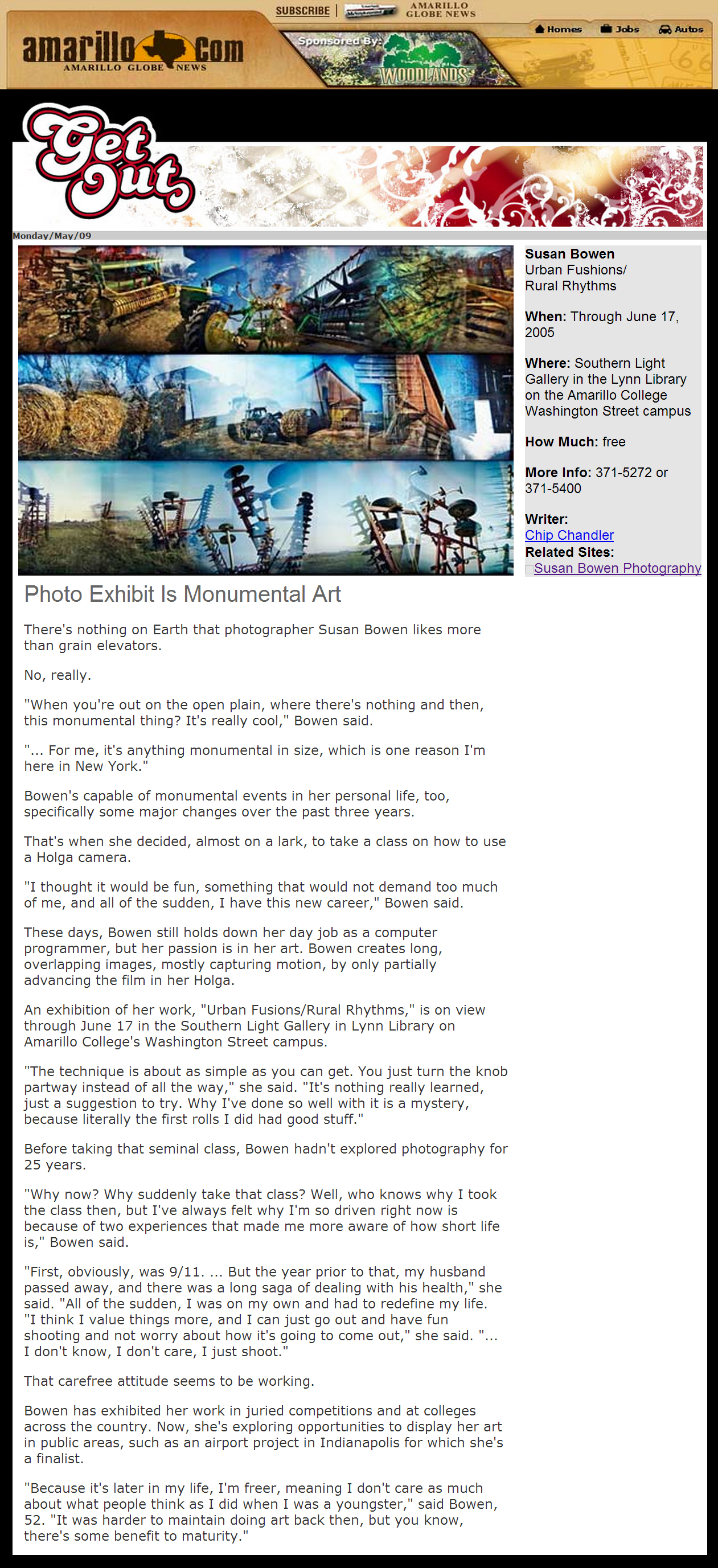
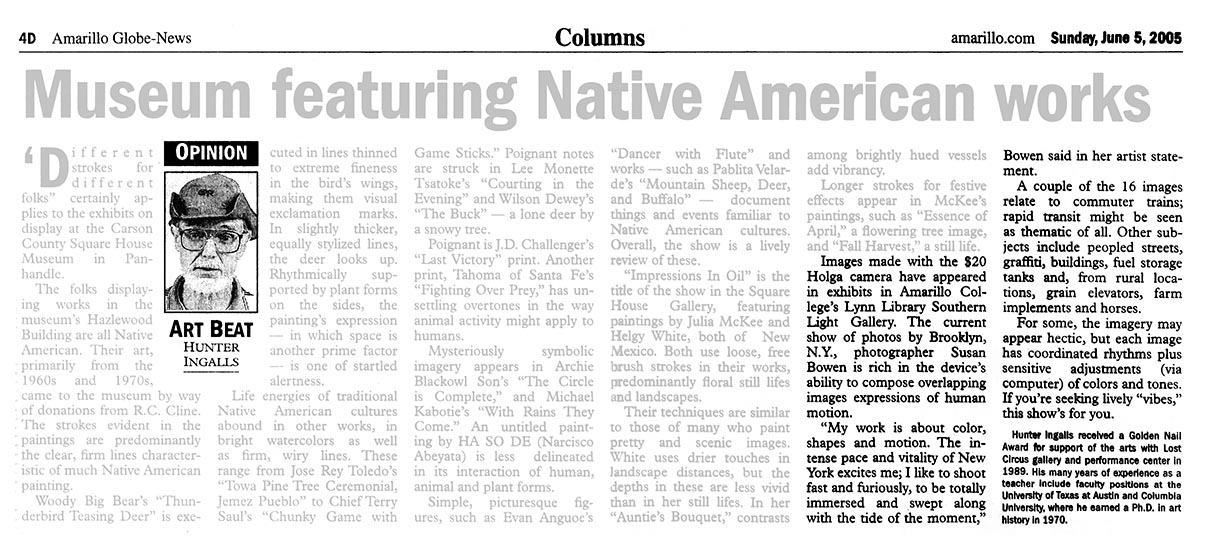
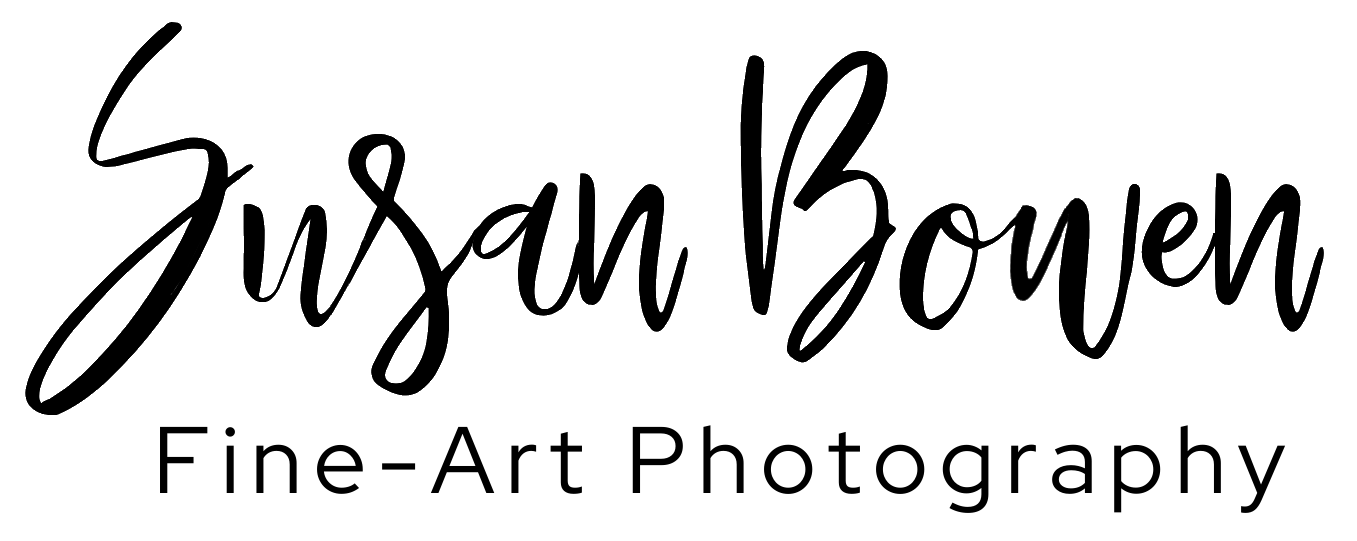
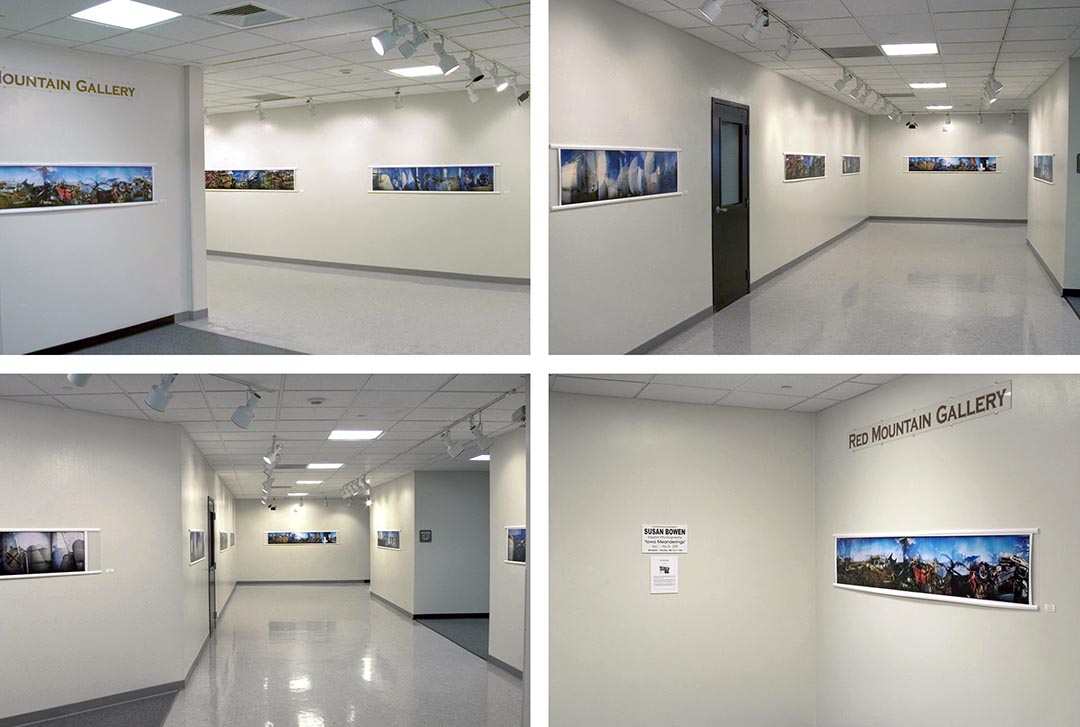
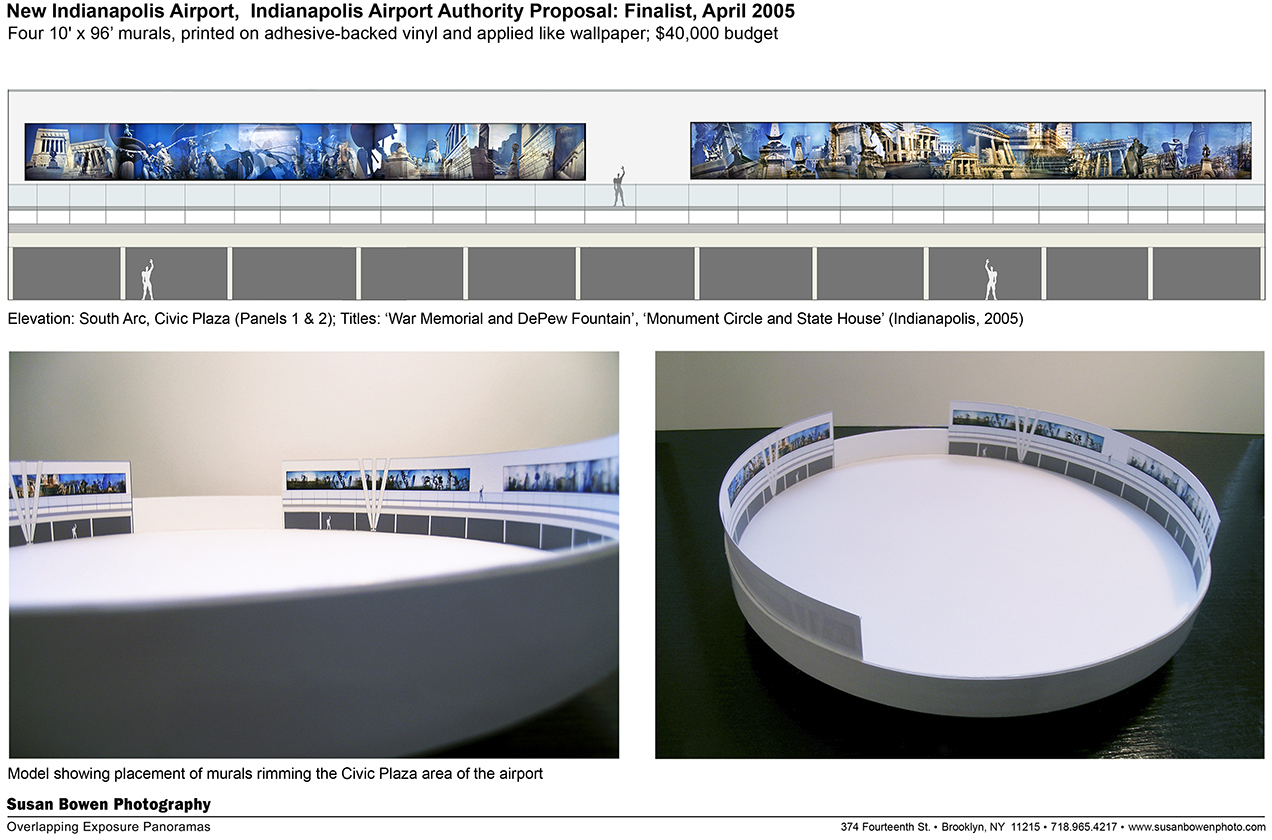
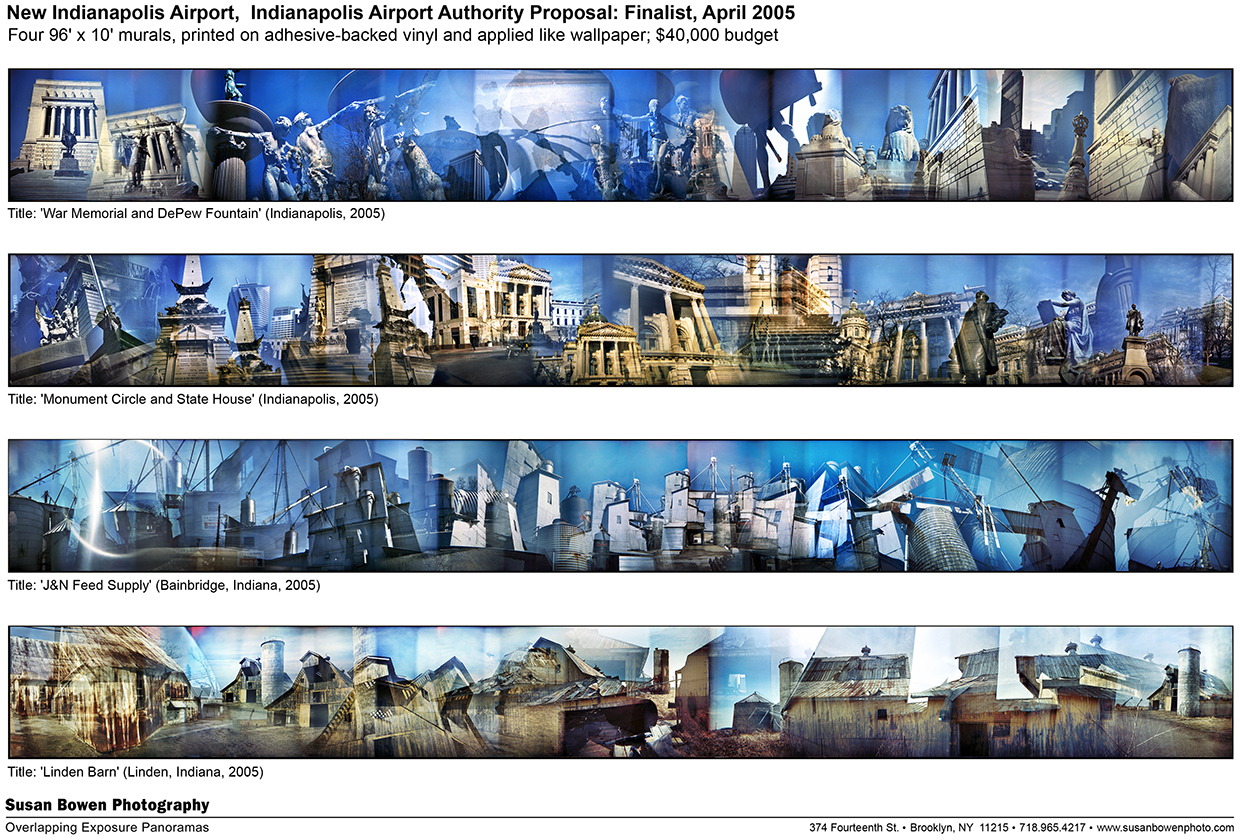
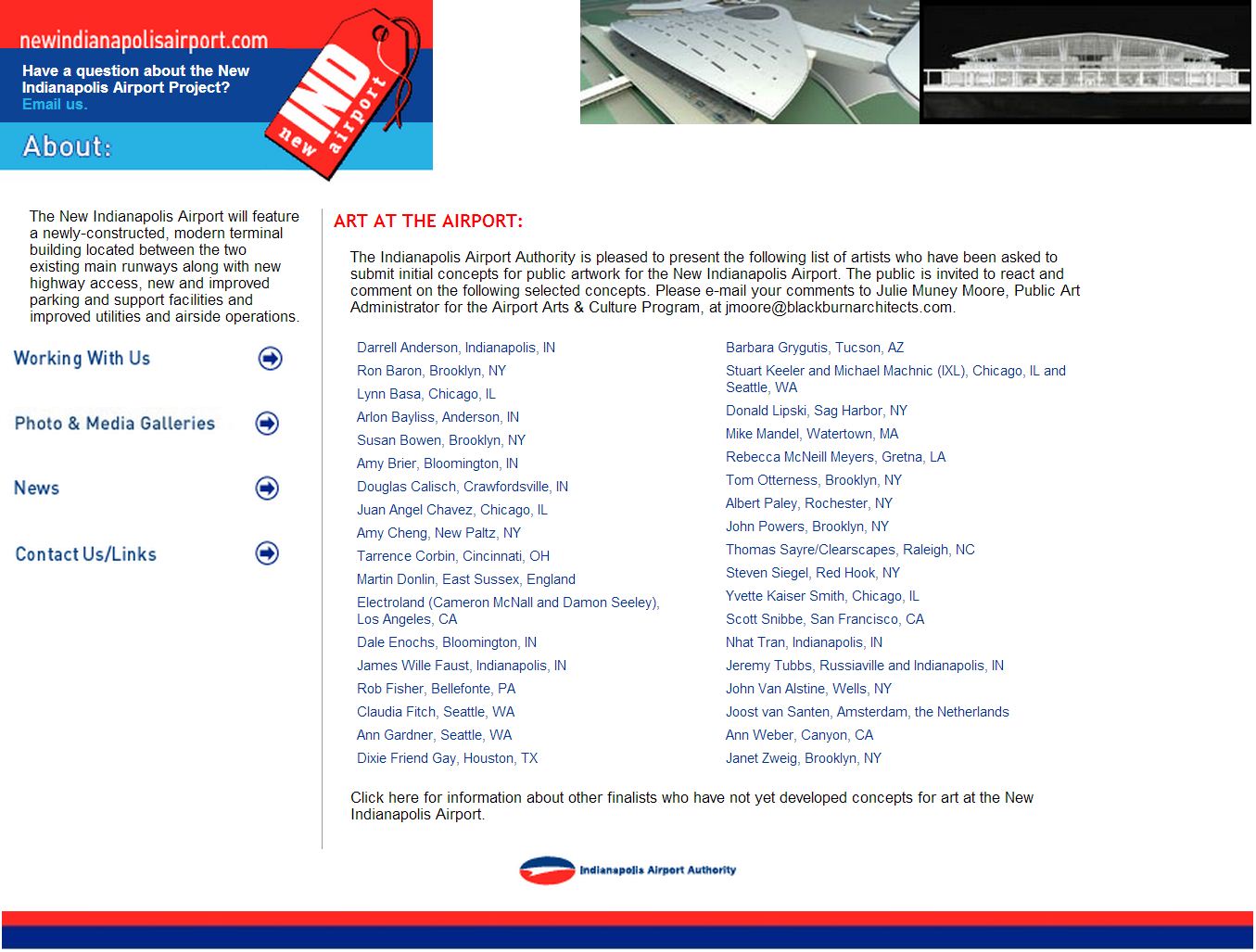
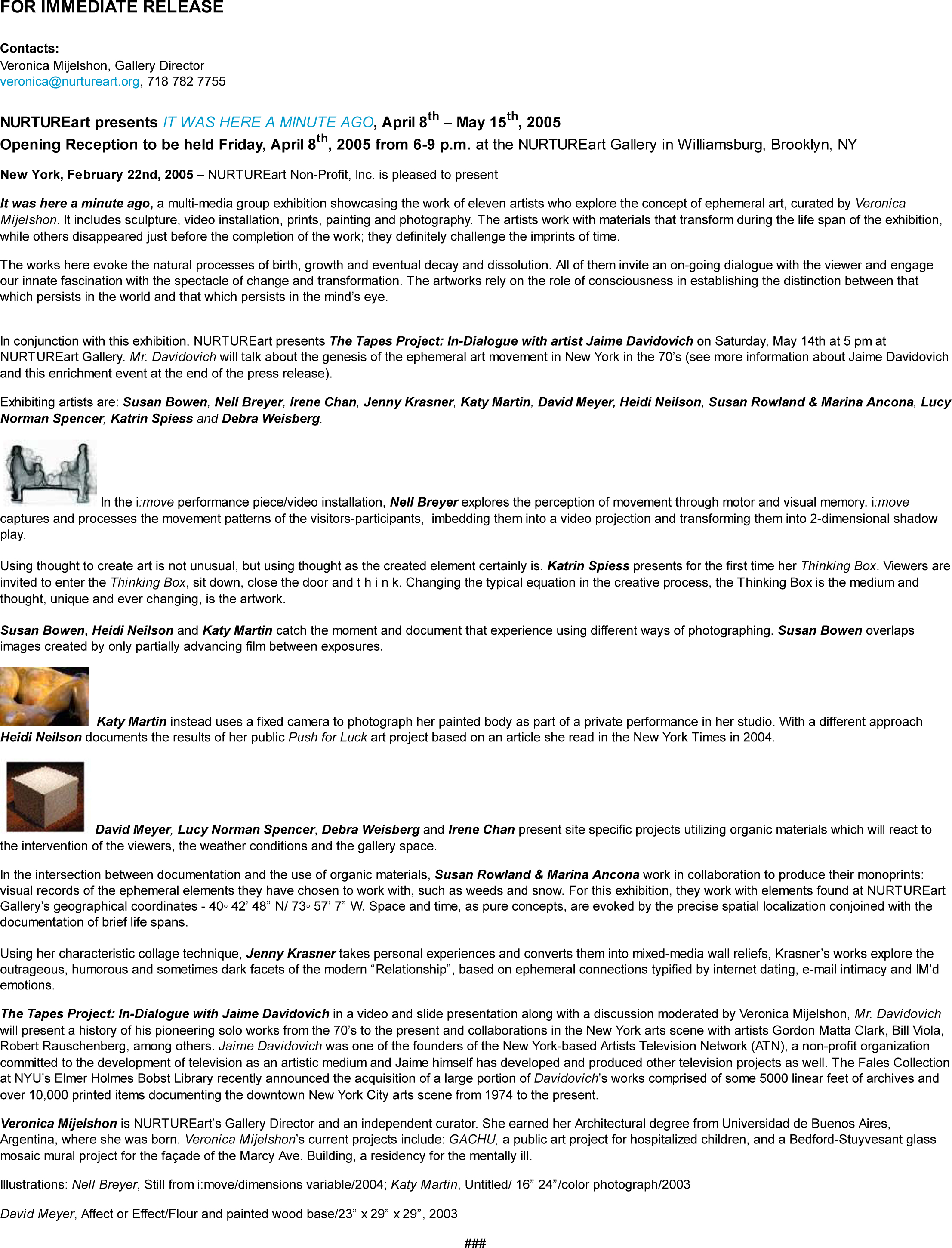
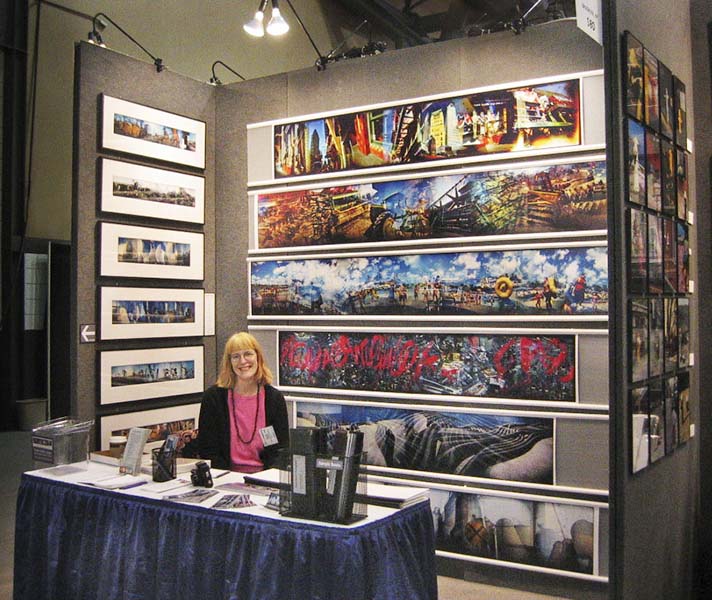
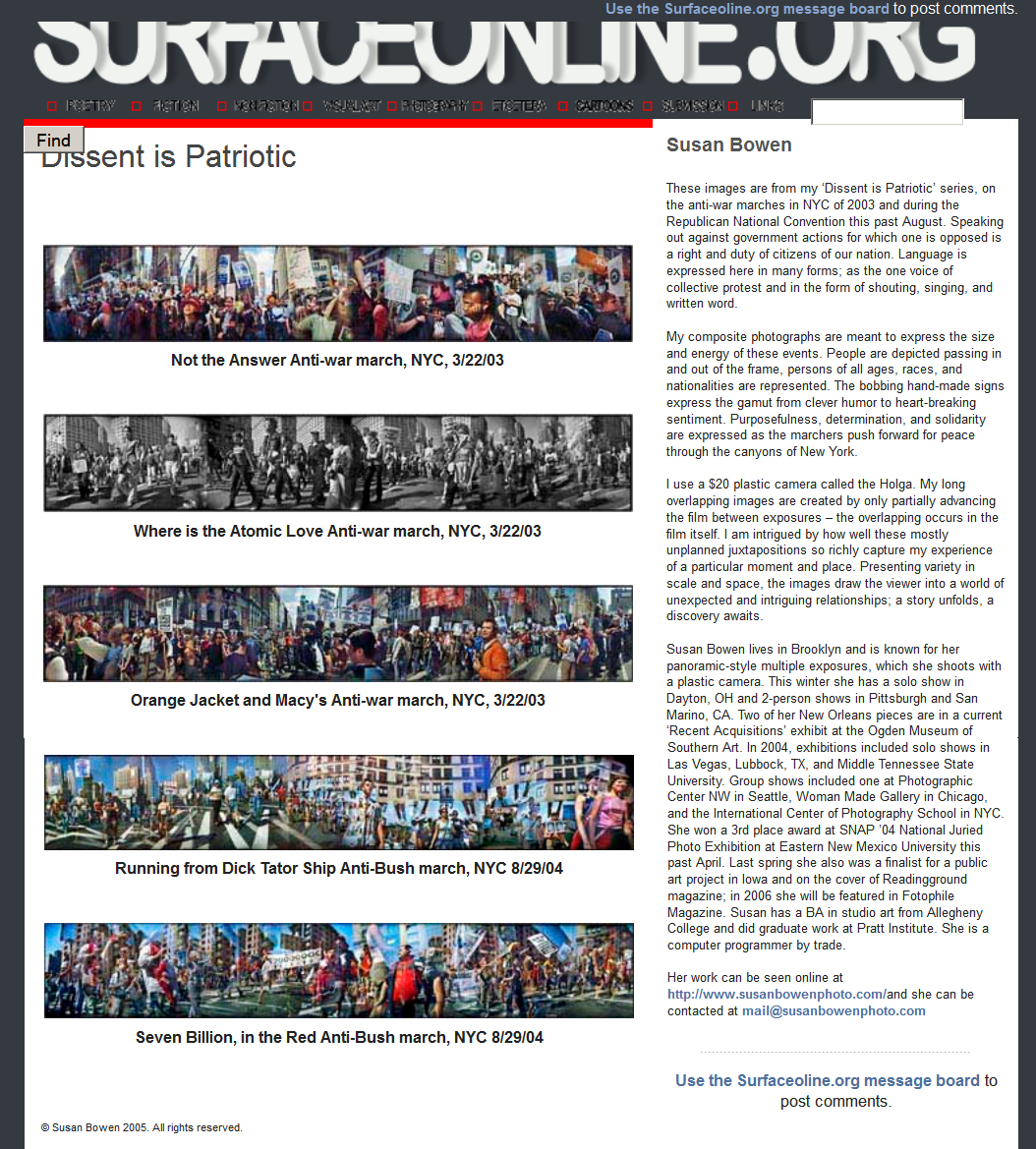
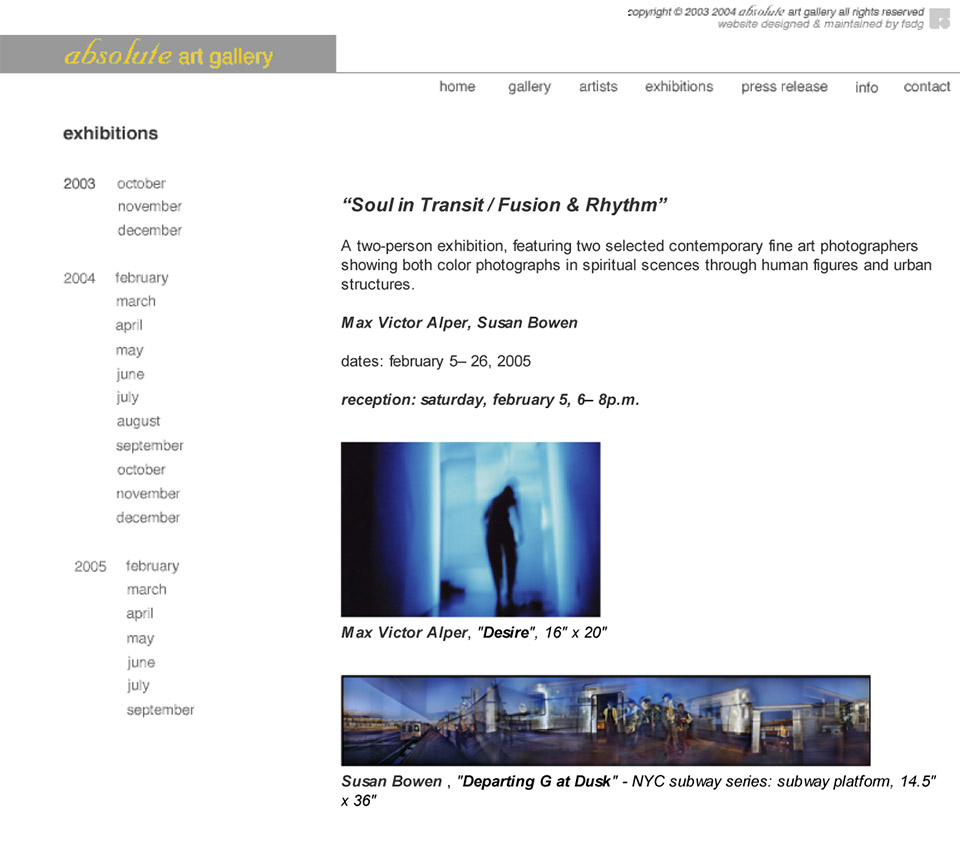
May 5 – June 17, 2005